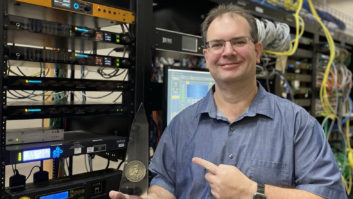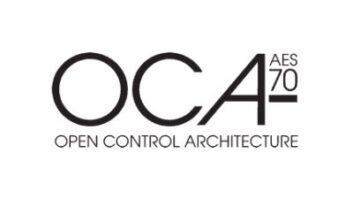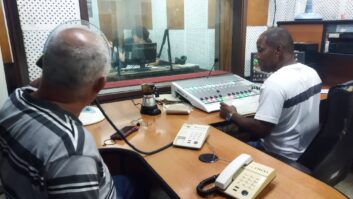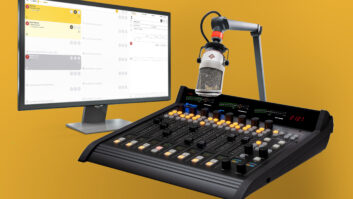GRAND FORKS, N.D. — Out with the old and in with the new. Two years ago our company decided to start replacing the old analog audio systems with current audio over IP digital platforms in all of our markets. With the many great choices for AoIP systems out there, we standardized on the WheatNet-IP system for our company. The WheatNet-IP system from Wheatstone has all the great features you would expect from a current AoIP system.

Our most current build has been taking place in Grand Forks, N.D., at our new studio building. The plan for the audio side was to be as completely digital-in and -out, as it sits at a 5 kW AM site. The WheatNet-IP system for this build consists of 31 “blades” and nine consoles. The blades are rackmounted input/output, control or processing modules that work with the WheatNet-IP network.
Some of the WheatNet-IP blades allow you to add eight audio sources and destinations along with 12 I/Os. We managed to get all but a few sources and destinations onto our digital network.
We preconfigured the whole system in a conference room in St. Cloud, Minn. To most of the staff, it was quite a shock that five on-air studios, two production rooms, newsroom and tech center could fit into such a small amount of space. The days of running a large amount of wire for all these rooms and equipment are gone. At the end of two days, the system was ready to be installed with all sources and destinations labeled and system IP address set up. This saved us a lot of time when we placed it for the first time in the new building.
For this market we are using direct wiring to each blade so the only punch blocks will be for tallies and relays. With the standard use of Cat-5e, Cat-6, etc., in AoIP systems, the wiring was easy. All the connectors are RJ-45 on the back of the blades. This allowed us to make use of our networking staff in wiring the new building for audio, which made for a quick install.
The Grand Forks market has a lot of satellite programing, so we used two LIO-48 logic blades to handle the relay inputs into the system in combination with the IP88D digital blades that add the satellite sources (AES) into the system. The LIO-48 logic blade is designed for logic and control functions. It has 48 I/Os (no audio) and has a front-panel display that shows which relay is active and makes troubleshooting easy when satellite problems arise. This also allows the system layout to stay clean and organized for integration with the RCS NexGen automation system.
We utilize NexGen to control WheatNet-IP through the utility mixers, source and destinations switches and control of fader on/offs. One of the features of the WheatNet-IP network that we found helpful was control. WheatNet-IP talks to the automation system with ease. We have our lobby/building speakers on WheatNet-IP and have a NexGen node automatically change the station each hour so the stations all get time. We also use the same approach in controlling our phone system’s on-hold audio. We have programed soft keys on the consoles to unlock doors for early morning guests through the I/Os on the blades.
All this sounds like a lot to keep track of, but we have found the use of Navigator to be an easy way to manage and control the system and keep things simple and easy. With one program you can get a layout of the total system and control sources and destinations with no problems. This also allows you to manage labels and do updates along with many other management items.
AoIP has been a great investment for us. It saves time in troubleshooting and installation, not to mention the audio quality improvement over analog makes it worth the money.
For information, contact Jay Tyler at Wheatstone in North Carolina at (252) 638-7000 or visit www.wheatstone.com.












